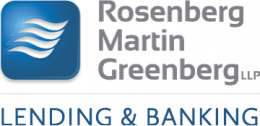Second Circuit: Debtors Must Pay Secured Creditors Market Rate Interest to Cram Down Chapter 11 Plans
According to an October 16, 2017 article in the New York Law Journal, the judges of the United States Bankruptcy Court for the Southern District of New York “are presiding over a record high number of large mega cases.” An October 20, 2017 decision of the United States Court of Appeals for the Second Circuit, whose decisions govern bankruptcy cases filed in New York, may lighten that case load.
In In re M.P.M. Silicones, L.L.C., the Second Circuit reviewed various aspects of a Chapter 11 plan that had been confirmed by the United States Bankruptcy Court for the Southern District of New York, whose decision had been affirmed on appeal to the United States District Court. One of the aspects of the plan that was the subject of the next level of appeal to the Second Circuit was the rate of interest that must be paid under the plan to a class of creditors holding secured claims in order for the plan to be confirmable over the objection of the class, i.e., “crammed down” in bankruptcy parlance.
Both the bankruptcy court and the district court had held that the U.S. Supreme Court’s decision in Till v. SCS Credit Corp. dictated the appropriate rate. In Till, the issue was the rate of interest that an individual debtor needed to pay to the holder of a claim secured by his truck to be able to confirm a Chapter 13 plan over the objection of the creditor. The creditor argued for a higher rate of interest than the rate proposed in the plan on the grounds that a borrower in the debtor’s financial condition would not be able to obtain a loan in the market except at a much higher rate.
The Supreme Court rejected a market rate approach to determining the appropriate rate of interest. Noting that a bankruptcy judge must determine that a Chapter 13 debtor will be able to make the payments provided for in a plan before the plan can be confirmed, the Supreme Court said that market rates “must be high enough to cover factors, like lenders’ transactions costs and overall profits, that are no longer relevant in the context of court-administered and court-supervised cramdown loans.” Instead of using market rates, the Supreme Court held that bankruptcy courts should use a “formula approach” to ascertain the appropriate interest rate. Under the formula adopted by the Supreme Court, the bankruptcy judge must start with the prime rate of interest and then adjust upward or downward, depending on the risk of non-payment in the particular case, as determined by the bankruptcy judge.
Although Till was decided under Chapter 13 of the Bankruptcy Code rather than Chapter 11, the Supreme Court cited a number of provisions of Chapter 11 in its decision and said “[w]e think it likely that Congress intended bankruptcy judges and trustees to follow essentially the same approach when choosing an appropriate interest rate under any of these [Code] provisions.” Consequently, many courts, as did the lower courts in M.P.M. Silicones, have applied the formula approach in Chapter 11.
The Second Circuit, however, focused on footnote 14 in the Supreme Court’s opinion in which the Court said “in Chapter 13 cramdowns there is no free market of willing cramdown lenders” and noted that “[i]nterestingly, the same is not true in the Chapter 11 context, as numerous lenders advertise financing for Chapter 11 debtors in possession. Thus, when picking a cramdown rate in a Chapter 11 case, it might make sense to ask what rate an efficient market would produce.” The Second Circuit noted that in a later Supreme Court decision on an issue of bankruptcy law unrelated to interest rates, the Court had said that “one of the [Bankruptcy] Code’s innovations [was] to narrow the occasions for courts to make valuation judgments,” and that it “expressed a disfavor for decisions untested by competitive choice . . . when some form of market valuation may be available.” Combining what the Supreme Court said in footnote 14 of its decision in Till with the later expression of support for market valuations, the Second Circuit said:
When dealing with a sub-prime loan in the Chapter 13 context, value can be elusive because the market is not necessarily efficient and the borrower is typically unsophisticated. However, where, as here, an efficient market may exist that generates an interest rate that is apparently acceptable to sophisticated parties dealing at arms-length, we conclude, consistent with footnote 14, that such a rate is preferable to a formula improvised by a court.
The Second Circuit did not determine what the appropriate interest rate was in the case before it, but remanded the case to the bankruptcy court to make that determination. However, in response to an argument by the debtor that the Second Circuit should have declined to hear the appeal on “equitable mootness” grounds because revisiting the interest rate after confirmation of the plan would “throw into doubt the viability of the Plan, [and] cause debilitating financial uncertainty” to the reorganized debtor, the Second Circuit said that applying a market rate approach rather than a formula approach on remand “might require, at most, $32 million of additional annual payments over seven years.”
Debtors considering filing a Chapter 11 case often have multiple choices of where to file. A corporation may file a Chapter 11 case where it is incorporated, where its principal place of business is located, where its principal assets are located, or where a bankruptcy case of an affiliate is pending. When a debtor has a choice between filing in the Southern District of New York and having to pay “only” $32 million more to get a plan confirmed and filing in another jurisdiction that applies the Till formula approach in Chapter 11 cases, it may well select the latter option. As a result of the Second Circuit’s decision in M.P.M. Silicones, New York bankruptcy judges may soon have more time on their hands.

